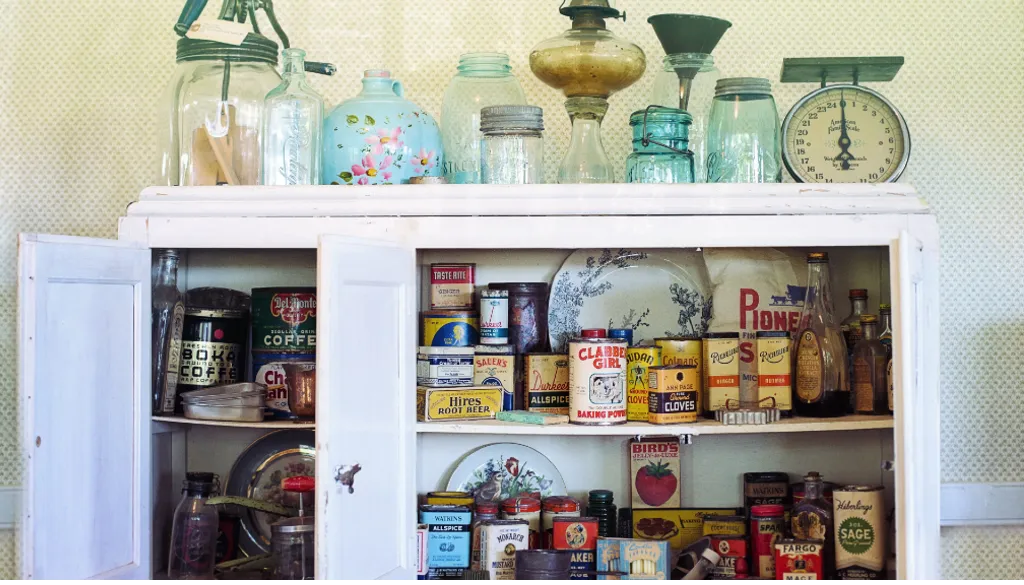
How To Organize Kitchen Cabinets: A Step-by-Step Guide
A messy, cluttered kitchen can be a huge source of frustration. Organizing kitchen cabinets can turn cooking from a fun activity to a frustrating chore. The key to a functional kitchen lies in smart cabinet organization. Here’s a step-by-step guide to help you organize your kitchen cabinets and get those kitchen cabinets in order:
1. Declutter and Purge

Photo Credit: terri_bateman
Take it all out. The first step is to remove everything from your cabinets and get an idea of the cabinet space.
Relate Article: How To Clean Kitchen Cabinets
Discard the unwanted. Get rid of expired food items, cracked dishes, mismatched lids, duplicate tools, and anything you haven’t used in ages. Be ruthless!
Donate what you don’t use. If there are good quality items you simply don’t use, donate them to someone who will.
2. Evaluate and Zone
Consider your use: Which cabinets are most convenient for your frequently used dishes, pots, and pans? What makes sense based on where your dishwasher, stove, and prep areas are?
Create zones: Designate zones in your kitchen for specific purposes:
- Everyday dishes and glasses
- Food storage containers
- Cooking utensils and pots/pans
- Baking supplies
- Less frequently used items (holiday dishes, specialty appliances)

3. Clean and Prep
Get your cleaning supplies ready: Before replacing anything, give your empty cabinets a thorough cleaning. Take the opportunity to line shelves if desired for easier cleanup in the future.
4. Kitchen cabinet organization ideas
- Shelf risers: Create extra storage space in any vertical space and create mini-shelves within your cabinets to double your available shelf space.
- Baskets and bins: Group-like items in clear bins on shelves – snacks, baking supplies, drink mixes, etc. This helps prevent items from getting jumbled up and will make any space look more neat.
- Lazy Susan’s: Great for maximizing those awkward corner cabinets, making things easier to reach.
- Drawer dividers: Organize cutlery, kitchen utensils, and gadgets for simple access.
- Under-shelf baskets: Utilize the unused space beneath your shelves to hang mugs or store smaller items, freeing up counter and shelf space.
- Door organizers: Use the inside of cabinet doors to hang pan lids, measuring cups, spice racks, or even plastic wrap and foil.
5. Put It Back (Strategically)
Everyday items: Put your most frequently used things in the most easily accessible cabinets at waist-to-shoulder height.
Less frequently needed: Store less commonly used or seasonal items higher up, lower down, or in harder-to-reach spots.
Similar together: Keep like with like. Baking supplies together, coffee/tea together, spices together, etc.
Keep it visible Stack things in shallow layers rather than deep stacks so you can quickly see what you have.
6. Label Everything!

Clear labels help everyone in the kitchen cabinet of the household find what they need and (hopefully!) put things back in their proper places. A label maker is great, but even masking tape and a marker will do the trick.
Additional Tips
Think outside the cabinets: Utilize unused wall space for hanging pots, pans, or mugs. Add open shelves for frequently used or decorative items. Walls are usually wasted space in a kitchen, use it wisely.

Store bulky items elsewhere: If you have limited kitchen space, store those big appliances that take up a lot of counter space or kitchen cabinet space in another closet or in the garage.
Maintain the system: The hardest part isn’t getting organized, but staying organized. Set aside 15 minutes a week to tidy up your cabinets to keep them functional.
Organizing your kitchen cabinets takes a bit of effort, but the payoff is huge! A well-organized kitchen makes cooking, baking sheets, and meal prep more enjoyable, saves you time, and even helps reduce food waste by ensuring you know what you have on hand.

